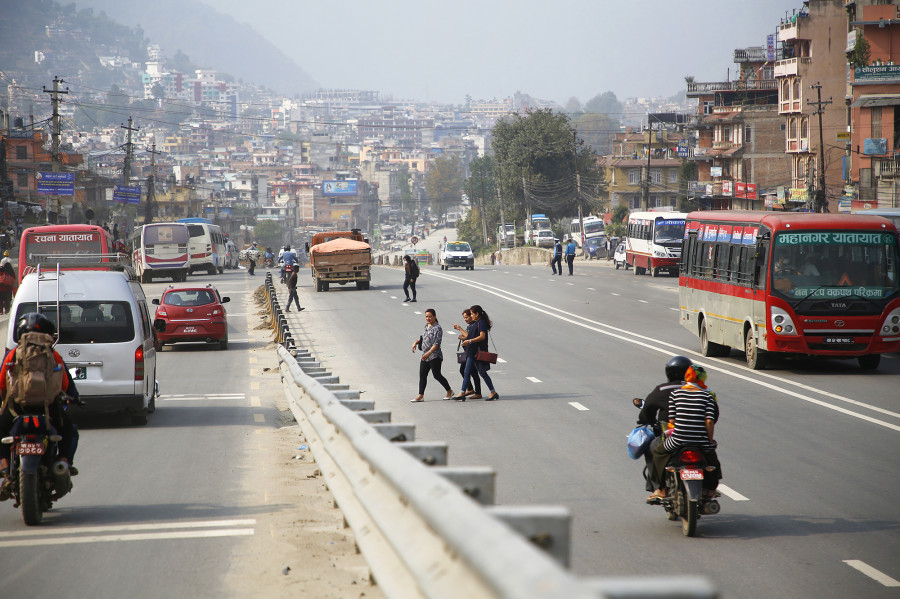Valley
Authorities yet to go through ‘Road Safety Audit’ report on Kalanki-Koteshwor stretch submitted three weeks ago
A total of 658 accidents have taken place on the stretch in the past 10 months
Anup Ojha
No significant improvement can be seen in adopting safety measures by the Department of Roads on the 10.5 km Kalanki-Koteshwor road section even after three weeks of receiving the ‘Road Safety Audit’ from a team of experts.
After receiving widespread criticism from the public and the media, given the increasing number of accidents and death along the road stretch, the government in the second week of February launched a ‘Road Safety Audit’ under road safety expert Padma Bahadur Shahi. The team—which included Department of Road engineers, representatives from Shanghai Construction Group Co Ltd, traffic engineers and civil engineers—had submitted a report three weeks ago.
When the Post contacted Lalitpur Divisional Chief Amrit Rimal at the Department of Roads, he said that he has not gone through the report yet. “We will have to look at the report first and then take necessary steps to address the problem,” said Rimal. “Nothing happens overnight; we need to be patient.”
As per the report obtained by the Post last week from the Metropolitan Traffic Police Range Lalitpur, a total of 658 accidents have taken place on the Kalanki-Koteshwor stretch in the past 10 months, in which 25 people were killed and 454 were critically injured.
The audit report points out over a dozen technical faults that need to be corrected on the ‘killer road’ section. This road section was officially handed over by Chinese Ambassador to Nepal Hou Yanqi on January 28 to the Kathmandu Ring Road Improvement Project.
The safety report suggests an addition of 12 zebra crossings on the 10.5 km stretch. Currently, there are only three zebra crossings—in Gwarko, Satdobato and Balkhu. The report also suggests placing drain covers on open drains that are spread over 4.2 km out of the 10.5 km of the road stretch. The open drains are known to pose grave danger for pedestrians and motorists.The audit also suggests installation of 400 street lamps on the entire stretch.
It also suggests installation of traffic signals in 213 places along the entire road stretch. Areas that are in dire need of traffic lights are also pointed out in the report—Balkumari, Gwarko, Satdobato, Chapagaun Dobato, Mahalaxmisthan, Ekantakuna, Nakkhu, Manohara bridge, Kalanki, Dhobighat, Sanepa Chowk and Khasibazar area.
Likewise, suggestions to improve intersections in Balkhu, Nakhu, Dhobighat, Khasibazar and Chapagaundobato are also highlighted in the report.
The report also suggests adding railings on both sides of the footpath on the road stretch.
“We have already submitted our report. Now it’s up to the government to implement our suggestions and adopt safety measures,” said Shahi. He said that the government should immediately install traffic lights and mark the roads with dividers and steel barriers to control the increasing number of accidents on the “killer road”.
The Traffic Division from last week has introduced laser speed guns—which have self-developing films and can take pictures of speeding vehicles up to 150 metres away. This was a move introduced to curb speeding on the Kalanki-Koteshwor stretch with the speed limit kept at 50km on the main lane and 20 km per hour on the service lane. However, many took to social media to call the move illogical and impractical to adopt on an ‘expressway.’




 19.12°C Kathmandu
19.12°C Kathmandu.jpg)










